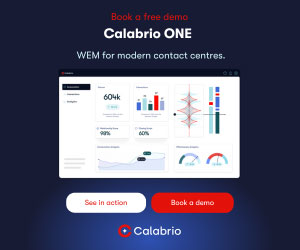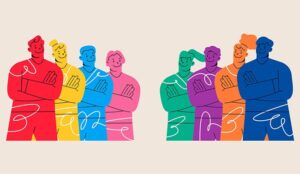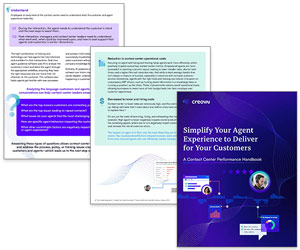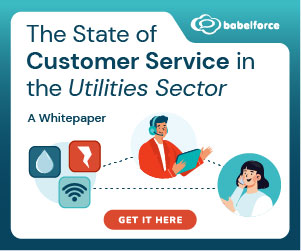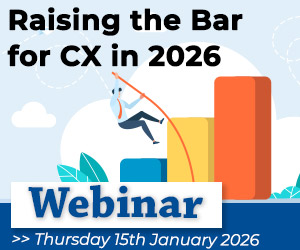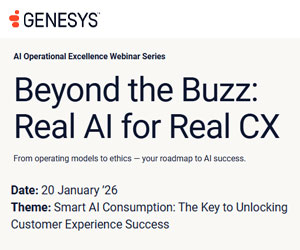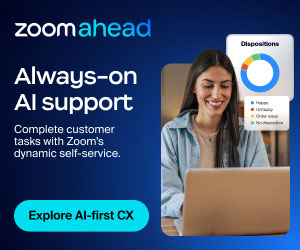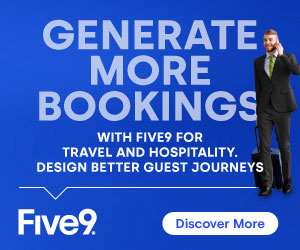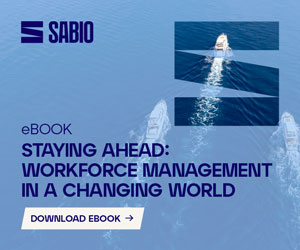How do you get a room full of agents to work like a well-oiled machine and ignite that little spark that makes them want to be the best?
It’s a tough balance to strike to truly boost morale, drive performance, and create a culture where everyone feels part of something bigger. Lean too far in one direction or another, and things can unravel quickly.
So, how do you actually walk this tightrope? Let’s dive in and see…
Why Healthy Competition Is Great for Contact Centres
Competition, at least a little, can be a beautiful thing.
It keeps agents sharp. It drives individual performance. It injects energy into day-to-day tasks. Leaderboards, recognition for top performers, or even just casual banter between shifts – these all create moments of motivation that push people to aim higher.
When it’s healthy, it encourages accountability. Agents are often more focused, more engaged, and more likely to go that extra mile when they know their performance is visible and measurable.
Plus, when individual achievements are celebrated, it sends the strong message that hard work doesn’t go unnoticed.
If you are looking for advice on improving your employee engagement strategy, read our article: How to Overhaul Your Employee Engagement (EX) Strategy
What Happens When the Balance Isn’t Right?
Healthy competition is key – because unrestrained competition can turn toxic fast. If you’ve ever worked in a contact centre where competition rules supreme, you’ll know exactly what this feels like.
It starts small, with agents maybe withholding information because they don’t want someone else to “beat” them.
Resentment starts to brew when one person dominates the leaderboard every week.
Team meetings feel more and more like post-match analysis rather than spaces of collaboration.
On the other hand, too much collaboration without any personal recognition can lead to complacency. If top performers feel their efforts aren’t rewarded, motivation dips.
And if weaker performers rely too heavily on their teammates, it can create unfairness, resentment, or even burnout in your stronger agents.
Here are a few signs the balance might be off:
- Your top performers are disengaged or leaving.
- Collaboration feels forced or one-sided.
- You’re seeing silos or information hoarding.
- Morale fluctuates depending on who’s “winning”.
- There’s confusion around goals or success metrics.
In short: when collaboration and competition aren’t aligned, nobody wins!
3 Key Ways to Strike the Right Balance
So how do we fix this? Or better yet – how do we build it right from the start?
1. Gamify (With Intent)
Gamification is your secret weapon – but only if it’s done strategically. It’s not just about fancy dashboards or digital badges.
After all, gamification without clear goals is like a game without a scoreboard – it’s just not as fun! If you can align your metrics with your overall business objectives, you can keep everyone focused on what really matters: delivering exceptional customer experiences.
That means measuring what matters – not just call volumes or handle time, but customer satisfaction, resolution rate, and team wins.
A mix of rewards to motivate different behaviours is key – individual rewards for top performers, team rewards for collective goals.
For advice on successfully applying gamification in your contact centre, read our article: Play to Win! 10 Steps to Gamify Your Contact Centre
2. Make Collaboration Part of the Game
Collaboration should be baked into the gamification design – rather than an afterthought.
Quite simply, collaboration should hold the highest reward and make others want to be better at their role while helping others to be better. This creates a sustainable ecosystem where models like ‘train the trainer’ can naturally emerge.
In other words: reward the helpers, the sharers, and the silent heroes who uplift their team.
3. Keep It Clear and Consistent
It also helps to remember that your gamification system needs to speak the same language as your performance management tools, business intelligence, and decision-making processes.
The rules of the game should be simple and clear, and the scoring should align with what drives your business.
If agents understand how the game works, what success looks like, and how they’re being measured – they’re more likely to trust the system and engage with it.
Examples of Games and Activities to Help You Succeed
So, what does this look like in action? Let’s talk about real examples of games and activities that spark healthy competition and collaboration.
“The Apprentice” Style Challenge
Split agents into cross-functional teams and assign them a customer experience challenge – e.g. design a new customer onboarding script or create a mini training module.
Give them a week to work together, present their ideas, and have leadership or even customers vote on the winner.
Why it works – Everyone brings their strengths, teams need to communicate, and there’s a clear reward for creative problem-solving. It’s about pitching teams against each other, not individual agents.
Mission-Based Quests
Instead of weekly targets, create “missions” agents can complete either solo or as a team.
For example:
- “Team up and achieve a 95%+ customer satisfaction rate by Friday.”
- “Help onboard a new hire and ensure they pass their quality review within 2 weeks.”
- “Everyone on the team must complete 2 peer-to-peer coaching sessions.”
Assign points to each mission, and build a visible tracker where individuals and teams can “level up”.
The Collaboration Leaderboard
Unlike traditional leaderboards that focus on individual performance metrics like calls handled, sales made, or CSAT scores, a collaboration leaderboard shines a spotlight on the behaviours that contribute to team success. It tracks and celebrates actions that help others do well – not just the agent themselves.
Think of it as a scoreboard for the unsung heroes: the coachers, knowledge-sharers, morale-boosters, and team players.
Here are a few things it might track:
- Peer-to-peer coaching hours – Time spent helping colleagues improve.
- Mentorship or onboarding contributions – Assisting new agents during ramp-up.
- Knowledge base contributions – Creating or improving internal resources.
- Kudos/recognition received from peers –Think Slack “thank yous” or internal shout-outs.
- Team win contributions – When a whole team hits a milestone, each contributing member earns points.
We spotted an example of this in action on our visit to Ocado’s Customer Hub in Sunderland, UK:
“Through their gamification platform, managers at Ocado can share top tips and advice with their colleagues, which can then earn them gems on their account and help to raise their profile in the company as a “guru”.”
Themed Sprints
Inject a serious dose of energy into the contact centre with a themed sprint – a short, high-impact week that’s all about performance and teamwork. Think: “Customer Obsession Week”, “Resolution Rockstar Challenge”, or “CX Olympics”.
Here’s the twist… Agents earn points not just for smashing their own goals, but also for lifting up their teammates.
Pair up or form trios to shadow each other’s calls, swap top techniques, and co-host quick-fire knowledge sessions. You’ll be amazed at how much wisdom lives within your team – and how fun it is to unlock it together.
Every action – from a great customer review to an epic assist – fuels the scoreboard, with bonus points for collaboration.
The vibe? Imagine a contact centre hackathon fused with a college spirit week – energizing, inclusive, full of friendly rivalry, and totally measurable.
Trophies, team names, themed playlists – go all in. It’s culture-building in disguise, and a brilliant way to bring healthy competition and collaboration to life in the same breath.
If you are looking for more games you can play in the contact centre, read our article: Can You Recommend Any Games I Can Use to Motivate My Agents?
When People Enjoy the Game, They Play Better
Balancing competition and collaboration isn’t about choosing one over the other. It’s about designing a culture – and systems – where both thrive in harmony.
Always remember:
- Reward both individuals and teams.
- Measure what truly matters – not just volume.
- Use gamification to encourage positive behaviour and shared learning.
- Build clarity into everything – from goals to metrics to rewards.
- And finally, make it fun. When people enjoy the game, they play better.
Your agents aren’t just KPIs on a screen. They’re people – and the more you design around humans, the more your whole contact centre thrives.
For more inspiration on what games you can use in your contact centre, read these articles next:
- Kick-Start Your Next Team Engagement Day
- Top 20 Motivational Games for the Contact Centre
- 8 Games to Liven Up the Contact Centre
Author: Stephanie Lennox
Reviewed by: Jo Robinson
Published On: 18th Aug 2025 - Last modified: 15th Sep 2025
Read more about - Call Centre Management, Employee Engagement, Fun and Games, Gamification, Leadership, Management Strategies, Motivation, Stephanie Lennox, Team Management, Top Story




